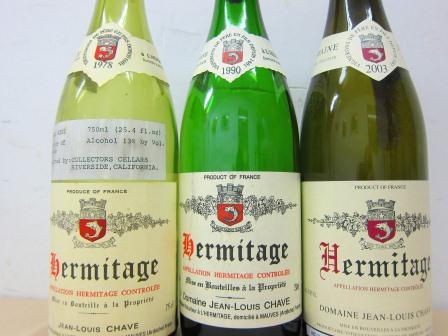1990 Domaine Jean-Louis Chave Hermitage Vin de Paille Hermitage Rhône France Wine Tasting Note
4271 Views
|
Now, here's a wine I thought I'd never see, let alone taste. Copper/orange in hue, the orange theme carries through with its focus on orange, apricot, tangerine, flowers and honeysuckle. At 16% ABV, there was no touch of heat. The wine was sweet, not not overly sugary. Rich, unctuous, fleshy and silky, the wine improved in the glass for more than an hour. My instincts say, another decade of bottle age will make this stunner even better! 4,271 Views Tasted Mar 6, 2017 |

When to Drink JL Chave, Anticipated Maturity, Decanting Time
Domaine JL Chave is not a wine that can be enjoyed young The wine needs time, at least 10 years or more and needed before the wine becomes civilized. At that point, 1-3 hours of decanting are recommended to allow the wine to soften and open its perfume. Older vintages might need very little decanting, just enough to remove the sediment.
Domaine JL Chave is usually better with 10-15 of bottle age. Of course, that can vary slightly, depending on the vintage. In the best vintages, the wine should be consumed within 15-45 years after the vintage.
Serving JL Chave with Wine, Food, Pairing Tips
JL Chave is best served at 15.5 degrees Celsius, 60 degrees Fahrenheit. The cool, almost cellar temperature gives the wine more freshness and lift.
Domaine JL Chave is best served with all types of classic meat dishes, veal, pork, beef, lamb, duck, game, roast chicken, roasted, braised, barbecued, and grilled dishes as well as smoked meats. Domaine JL Chave is also good with Asian dishes, and hearty fish courses like tuna, mushrooms, cheese, and pasta.
The white wine of Domaine JL Chave is best served with a myriad of different seafood dishes, shellfish, crab, lobster, sushi, sashimi, chicken, pork, and veal, as well as Asian cuisine.

